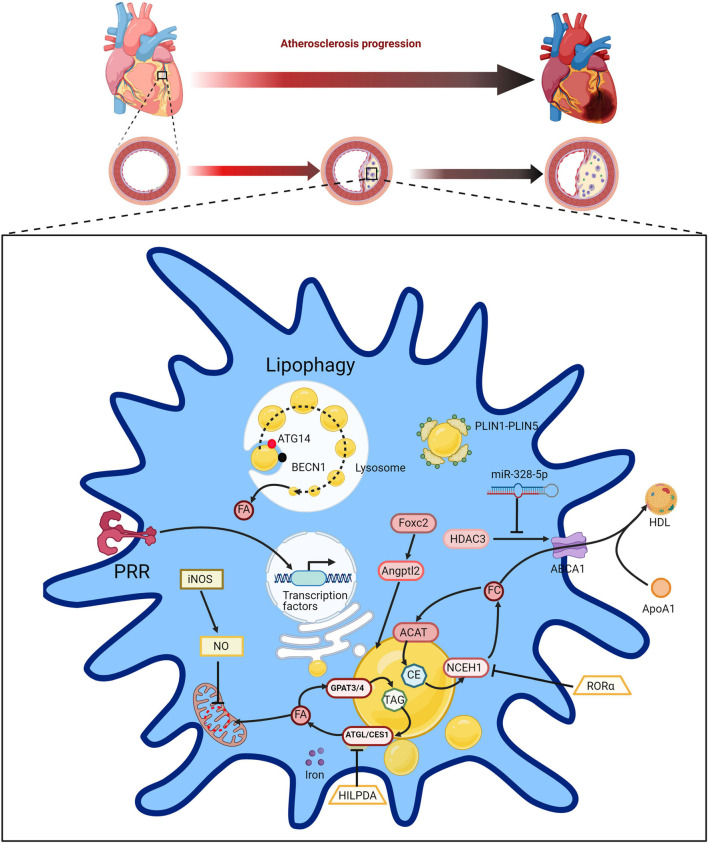FIGURE 4.
Atherosclerosis is accompanied by the accumulation of LDs in macrophages. Macrophages can reduce excessive lipid accumulation in the body by increasing the lipopolysis of intracellular LDs and avoiding the damage of cells from lipid toxicity, thus alleviating the further development of atherosclerosis. Intracellular free cholesterol (FC) can be transferred extracellular by ABCA1 to combine with extracellular apolipoprotein A1 (ApoA1) to form high-density lipoprotein (HDL). The activity of ABCA1 is mediated by miR-328-5p reduction regulated histone deacetylase 3 (HDAC3). TAGs can be synthesized by FA under the action of GPAT3 and GPAT4, and TAGs break down to produce free fatty acids under the action of ATGL and CES1. The hydrolysis of cholesterol ester (CE) is catalyzed by neutral cholesterol ester hydrolase 1 (NCEH1) to produce free cholesterol (FE), and the synthesis of CE is catalyzed by acyl-coenzyme A-cholesterol acyltransferase (ACAT). Foxc2-induced Angptl2-mediated lipid accumulation is also associated with atherosclerosis. Nitric oxide (NO) derived from iNOS can inhibit mitochondrial respiration. The lipophagy can be mediated by BECN1 and ATG14 in macrophages, decomposing LDs to produce FA. The perilipin family of PLIN1-PLIN5 is the mark in LDs accumulation in macrophage. Hypoxia-inducible lipid droplet-associated protein (HILPDA) is a physiological inhibitor of ATGL-mediated lipopolysis in macrophages, binding to the intracellular triglyceride hydrolase ATGL and inhibiting ATGL-mediated triglyceride hydrolysis. Retinoic acid receptor-related orphan receptor α(RORα) can induce the high expression of NCEH1 in macrophages, thereby promoting the hydrolysis of cholesterol ester in LDs and alleviating lipid accumulation.

